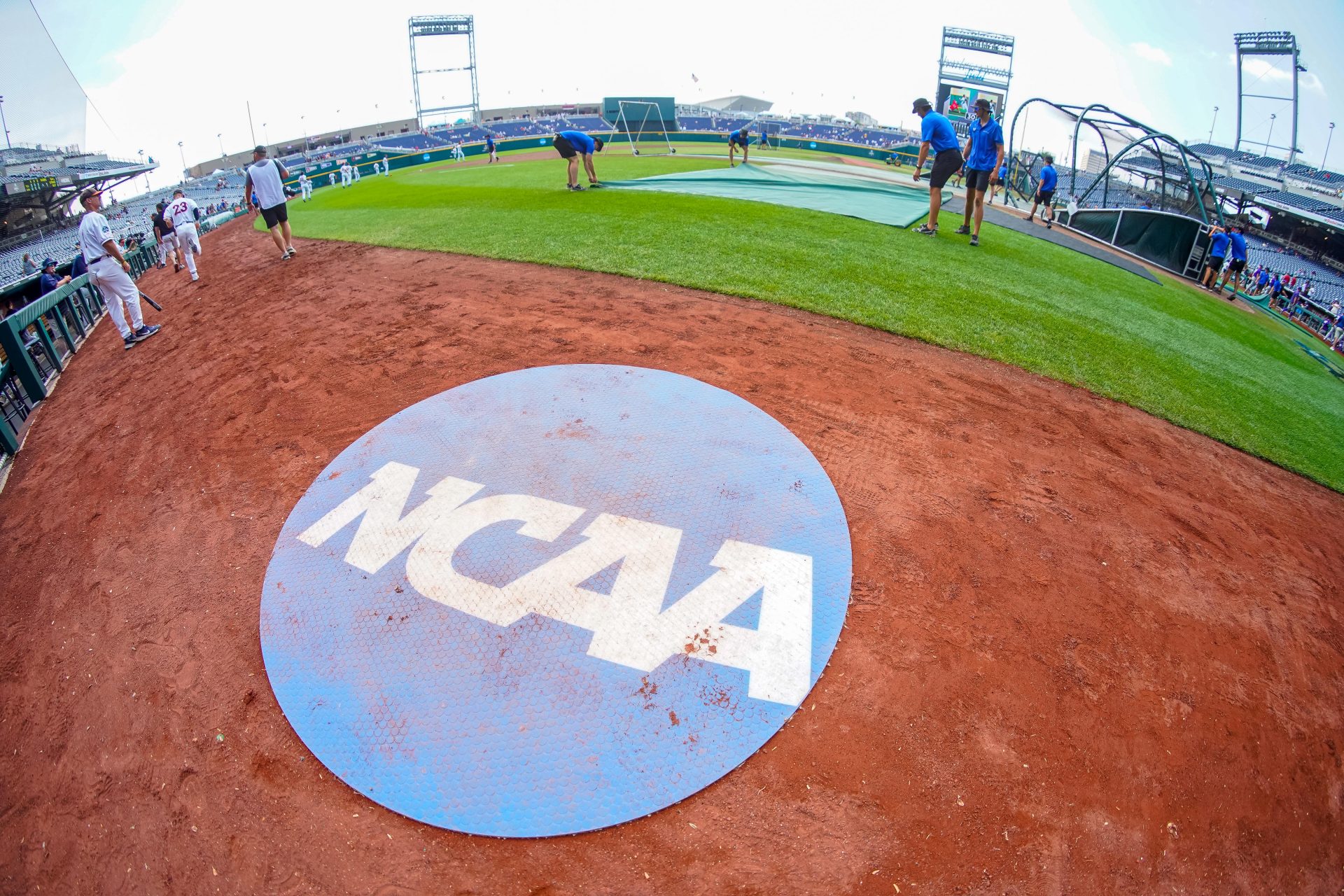When President Trump went down to Tuscaloosa to speak at the University of Alabama’s commencement address on Thursday, he met with another fellow speaker, legendary football coach Nick Saban.
The two discussed the current state of college athletics in detail, with Saban sharing his deep concerns about the massive amounts of money coming into play over the last four years, especially in major sports such as football and basketball. How did Trump respond?

After Meeting With Nick Saban, Donald Trump Could Address NIL
After unleashing Elon Musk and his DOGE squad on federal agencies, daydreaming aloud about adding Canada and Greenland, and unleashing a wave of tariffs on foreign nations around the world, where is President Donald Trump focusing his attention next?
Could it be the highly combustible world of college athletics?
While in Tuscaloosa to speak at the University of Alabama’s spring 2025 commencement, Trump met with the Crimson Tide’s iconic seven-time national championship-winning (6 with Alabama) former football coach, Nick Saban. Now retired and an analyst for ESPN’s College Gameday, Saban regularly expressed concerns with the direction college athletics has taken in recent years with the advent of NIL.
Name. Image. Likeness. The idea was brought to the nation’s attention nearly two decades ago when former UCLA men’s basketball player Ed O’Bannon filed a federal lawsuit against the NCAA over the compensation rights of collegiate athletes for the commercial uses of their names, images, and likenesses. That includes areas likes video games, jersey sales, local and national advertisements, and much more, with hundreds of millions, if not billions at stake.
The gates began flooding in 2021 after the NCAA implemented an interim policy allowing collegiate players (or, according to the NCAA, student-athletes) to profit from their NIL opportunities. With little to no framework or guidelines, the result has been a scholastic wild west.
Whole college basketball rosters with remaining eligibility have transferred. Athletes are matriculating to two, three, four, and sometimes even more universities during their collegiate careers. Those with little to no professional prospects are doing anything they can to squeeze out more college eligibility. These kids have agents, deal with athletic boosters, and some are now routinely bringing home more than a million dollars annually.
There is also a pending class-action settlement that would affect a college’s ability to pay athletes directly from billions in revenue generated for the schools by those athletes. That includes annual broadcast rights fees paid by TV networks. For example, per Action Network, each of the Big Ten’s schools was slated to receive more than $60 million for the 2024-20 season.
Opendorse, a leading athlete marketplace and NIL technology company, recently reported that the projected NIL market for 2025 is expected to hit “1.67 billion — with no signs of slowing down.”
Proponents of this freedom will note that coaches have been able to freely move from school to school, or from college to the pros, at will, and can easily profit off of their own name, image, and likeness opportunities.
But how much is too much? That’s just what Saban, who has publicly been a proponent of college athletes getting paid, discussed with President Trump Thursday night.
Anyone who watched Saban’s debut on College Gameday last fall probably noticed three consistencies:
- His weekly film breakdowns with Reece Davis at his side became must-see viewing for anyone interested in the intricacies and schematics on both sides of the ball.
- Saban played Felix to Pat McAfee’s Oscar in the latest rendition of the Odd Couple. McAfee routinely stood on his chair and sang and shouted and took his shirt off with glee while Saban, in his customary suit no less, sat next to him focused on making his next point about backup quarterbacks and nickel defenses.
- Nearly every week, Saban hammered home how the NCAA and others needed to step in to provide some guidelines to the current chaos created by the lack of guidance regarding name, image, and likeness provisions.
With no willing or able participants from the NCAA or at the university levels to date, Saban turned to a man noted for his willingness to take on institutions, even athletic ones, including his decades-long conflict with the NFL.
According to the Wall Street Journal, following last night’s meeting with Saban, the Trump administration announced that it is “considering an executive order that could increase scrutiny of the explosion in payments to college athletes since 2021.”
KEEP READING: Who’s Winning the Race for the No. 1 Seed in College Baseball?
The Wall Street Journal added that Trump “agreed with Saban and would look at crafting and executive order.”
The NCAA has yet to comment officially on President Trump’s comments.
College Sports Network has you covered with the latest news, analysis, insights, and trending stories in football, basketball, and more!

